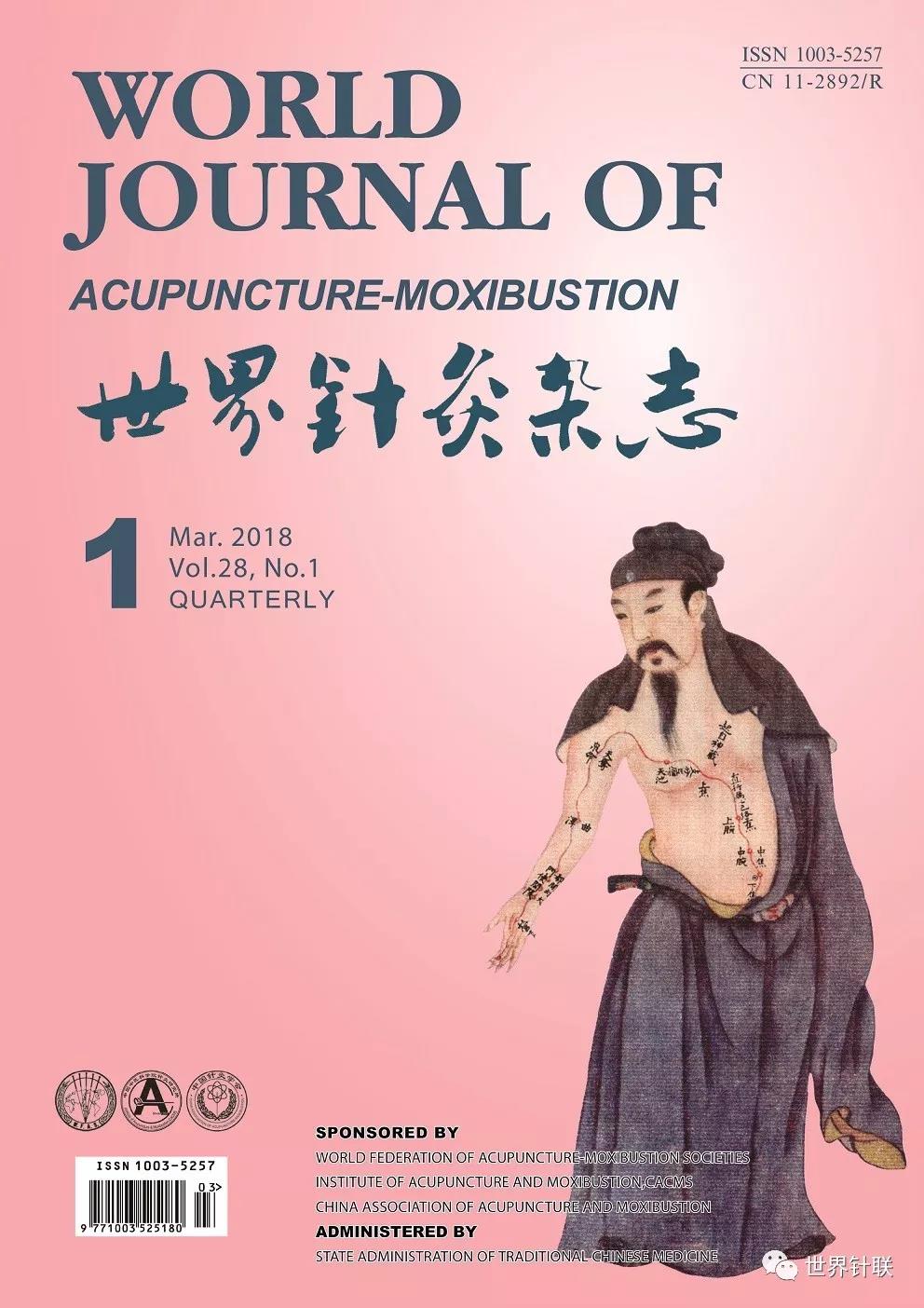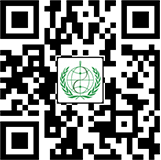
 我要投稿
我要投稿
Acupuncture on back-shu points of five zang for chronic fatigue syndrome: A randomized controlled trial
针刺五脏背俞穴治疗慢性疲劳综合征:随机对照试验
San-san Chen(陈三三)a, Ran Liu(刘然)a, Bin Wu(吴彬)a, Sheng Chen(陈晟)a, Fang Guo(郭昉)b, Xiao-lin Xue(薛晓琳)c, Jun Wang(王军)a*
aAcupuncture Department, Dongzhimen Hospital, Beijing University of Chinese Medicine (BUCM), Beijing 100700, China(北京中医药大学东直门医院针灸科, 北京100700,中国)
bChinese Medicine Department, People's Hospital, Beijing University, Beijing 100044, China(北京大学人民医院中医科,北京100044,中国)
cBeijing University of Chinese Medicine (BUCM), Beijing 100029,China(北京中医药大学,北京100029,中国)
☆Supported by the subject of clinical research on treating chronic fatigue syndrome by acupuncture on the reaction point of back-shu points in Dongzhimen Hospital Beijing University of Chinese Medicine: 2016-DZM111-JC006
*Corresponding author.
E-mail address: wangjunee@yeah.net (J. WANG)
ABSTRACT
Objective: To observe the clinical efficacy of acupuncture on back-shu points of five zang in treating chronic fatigue syndrome (CFS).
Methods: Sixty patients were randomized into treatment group and control group. In treatment group, the back-shu points of five zang organs were adopted for acupuncture. Shènshū(肾俞BL23)was perpendicularly needled 15 to 30 mm in depth. The rest of the selected points were inserted obliquely 15 to 30 mm in the direction of the spine with even method of lifting-thrusting and twisting-twirling, 10s for each acupoint. In control group, the acupoints were approximately 1.5~2 cm away outward from the back-shu points of five zang organs (about on the middle of the two sidelines of the bladder meridian of foot-taiyang) and the points from the bladder meridian of foot-taiyang were excluded. Acupoints were needled 6~9 mm in depth, and deqi was not required, without any manipulation. The treatments were carried out twice a week for twenty minutes each time, a total of eight treatments were given. The clinical efficacy of acupuncture treatment for CFS was evaluated through the Fatigue Scale-14(FS-14) and the Symptom Check-List 90(SCL-90) after treatment.
Results: The total effective rate was 86.67% in the treatment group and 53.33% in the control group (P<0.01). In treatment group, FS-14 total scores, somatic fatigue scores, and mental fatigue scores were significantly reduced than before treatment (all P <0.01). In control group, FS-14 total scores and somatic fatigue scores were significantly reduced (both P <0.01). The improvement of FS-14 total scores, somatic fatigue scores, and mental fatigue scores in the treatment group were better than those in the control group (P <0.01, P<0.05). After treatment, SCL-90 total scores and somatization, compulsion, interpersonal sensitivity, depression, anxiety, hostility, psychoticism, and other factors scores were significantly reduced in the treatment group compared with before treatment (P<0.01). In control group, the SCL-90 total scores and the scores of somatization, compulsion, hostility, and other factors after treatment were lower than those before treatment (P<0.01). The total scores of SCL-90 and somatization, compulsion, interpersonal sensitivity, depression, anxiety, psychoticism, and other factors in the treatment group were significantly lower than those in the control group (P<0.01, P<0.05).
Conclusions: Acupuncture on back-shu points of five zang can significantly improve the somatic fatigue and mental fatigue of the patients, and at the same time improve their psychological status. Significant therapeutic effect was found on CFS. Compared with the control group, the acupuncture treatment can significantly improve the patient’s somatic fatigue, mental fatigue and psychological status.
Key Words:
chronic fatigue syndrome; back-shu points of five zang ; Acupuncture thrapy; Randomized control trial
ABSTRACT IN CHINESE
[摘要]目的:观察针刺五脏背俞穴治疗慢性疲劳综合征的临床疗效。方法:本研究分为治疗组和对照组,每组各观察30例。治疗组选取五脏背俞穴作为进针点,除了肾俞直刺15~30mm外,其余穴位均向脊柱方向斜刺15~30mm,采用平补平泻法,每穴行针10s。对照组选取五脏背俞穴分别向外旁开约 1.5~2cm 处(约在足太阳膀胱经两条侧线的中间线上)进针(均取双侧),避开足太阳膀胱经腧穴,直刺 6~9 mm,进针后不要求得气,不做手法。两组患者均每周治疗2次,每次留针 20min,共治疗8次,8次结束后观察临床疗效及治疗前后疲劳量表(Fatigue Scale-14,FS-14)、症状自评量表( Symptom Check-List 90,SCL-90) 的变化。
结果:治疗组总有效率为86.67%,对照组为53.33%(P<0.01)。治疗组 FS-14 总积分及躯体疲劳、脑力疲劳积分较治疗前均明显改善(P<0.01),对照组 FS-14 总积分及躯体疲劳积分较治疗前均明显改善(P<0.01)。治疗组 FS-14 总积分及躯体疲劳、脑力疲劳积分均较对照组改善(P<0.01,P<0.05)。治疗组 SCL-90 总积分及躯体化、强迫、人际敏感、抑郁、焦虑、敌对、精神病性、其他因子积分较治疗前均明显改善(均P<0.01);对照组 SCL-90 总积分及躯体化、强迫、敌对、其他因子积分较治疗前均明显改善(均P<0.01)。治疗组 SCL-90 总积分及躯体化、强迫、人际敏感、抑郁、焦虑、精神病性、其他因子积分均较对照组改善(P<0.01,P<0.05)。结论:针刺五脏背俞穴能显著改善患者的躯体疲劳、脑力疲劳,同时改善其心理状态,对 CFS 有显著的治疗效果。与对照组相比,治疗组能更好地改善患者的疲劳状况以及心理状态。
[关键词]慢性疲劳综合征,五脏背俞穴,针刺,随机对照研究
《世界针灸杂志 》World Journal of Acupuncture-Moxibustion

《世界针灸杂志》(英文版)创刊于1991年,是由国家中医药管理局主管,世界针灸学会联合会、中国中医科学院针灸研究所和中国针灸学会联合主办的国际性针灸学术期刊。《世界针灸杂志》全世界发行,同期发行意大利文版。
2012年,《世界针灸杂志》被收录进入Science Direct数据库。2015年,被中国科学引文数据库(CSCD)核心库收录。2016年被国际著名科学文献出版公司科睿唯安(原汤森路透集团) Emerging Sources Citation Index(ESCI)收录,可在Web of Science 核心集合子集中查询,与SCI源刊同路径检索与下载。《世界针灸杂志》编委会由全球范围内的46位知名专家组成,其中境外专家占58.7%。2018年起,《世界针灸杂志》成为爱思唯尔全流程合作期刊,全面实现了出版流程和排版的国际化。
World Journal of Acupuncture-Moxibustion (WJAM) was established in 1991, which has been administered by State Administration of Traditional Chinese Medicine of the People's Republic of China, sponsored by World Federation of Acupuncture-Moxibustion Societies (WFAS), Institute of Acupuncture and Moxibustion, China Academy of Chinese Medical Sciences (CACMS) and China Association of Acupuncture and Moxibustion (CAAM). It is an English version academic journal from China and publish throughout the world, and the Italian version is published correspondingly.
In 2012, WJAM was collected by Science Direct. In 2015, WJAM was collected by Chinese Science Citation Database (CSCD). In 2016, WJAM was selected into the Emerging Sources Citation Index (ESCI) which is hold by the famous International scientific literature publishing company Clarivate Analytics (original Thomson Reuters). The papers of WJAM can be searched in the subset of Web of Science Core Collection and can be searched and downloaded the same way as the journals collected by Science Citation Index (SCI). The fifth editorial board of WJAM consists of 46 renowned experts all over the world and 58.7% of them are outside China mainland. From the beginning of 2018, WJAM has been the full-service journal of Elsevier, and the edit and production becoming more standard and international.
英文投稿网址:
https://www.journals.elsevier.com/world-journal-of-acupuncture-moxibustion
中文投稿网址:
http://sjja.cbpt.cnki.net/WKA3/WebPublication/index.aspx?mid=sjja
